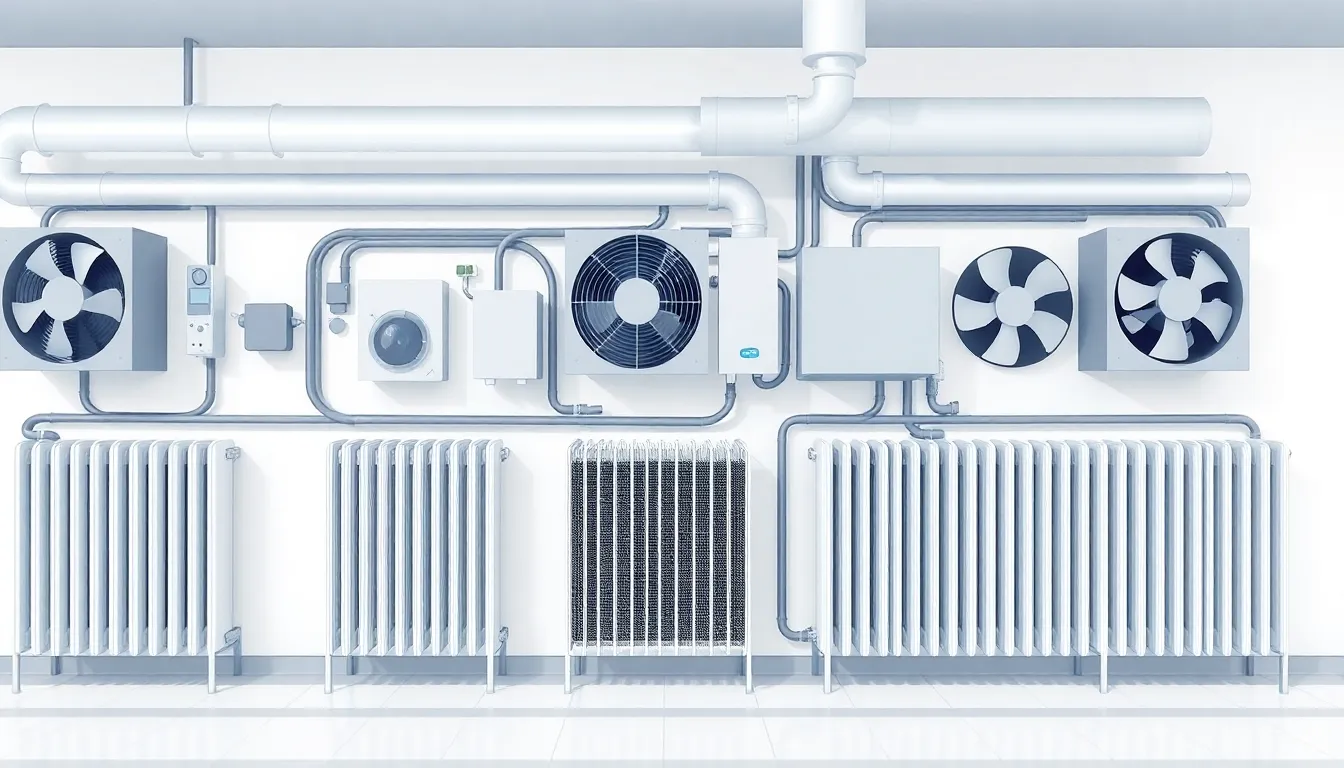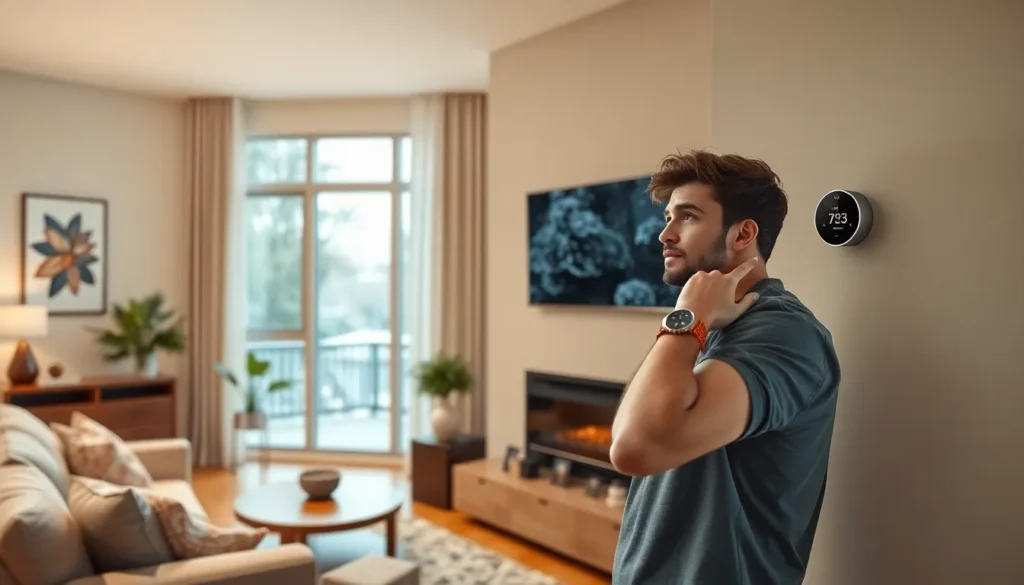Table of Contents
ToggleIn a world where the weather can’t make up its mind, temperature control tech is the unsung hero we didn’t know we needed. Picture this: you walk into your home, and it’s cooler than a polar bear in sunglasses, or warmer than a freshly baked cookie. Thanks to innovative temperature control solutions, you can say goodbye to those awkward moments of sweating like a sinner in church or shivering like a chihuahua in winter.
Overview of Temperature Control Tech
Temperature control technology plays a critical role in maintaining comfortable indoor climates. This technology adapts to external weather changes and enhances overall living conditions.
Definition and Importance
Temperature control tech refers to systems designed to regulate and maintain indoor temperatures. Proper management significantly enhances comfort levels, leading to improved health and productivity. Uncontrolled environments can adversely affect mood and well-being, making these systems vital for both residential and commercial spaces. Moreover, advancements in this field contribute to energy efficiency, reducing costs and environmental impact. Effective temperature control often relies on HVAC systems, smart thermostats, and IoT solutions, which provide real-time monitoring and adjustments. Recognizing its importance encourages investment in these technologies to ensure optimal indoor conditions.
Key Applications
Temperature control technology finds extensive use in various sectors. Residential applications include smart thermostats that allow users to manage home temperatures remotely. In commercial settings, businesses utilize specialized systems to maintain consistent temperatures, critical for product preservation, such as in food and pharmaceuticals. Industrial processes often require strict temperature controls to ensure product quality and safety. Data centers depend on precise climate management to protect sensitive equipment. Additionally, agricultural sectors rely on temperature control for optimal crop growth and livestock management. Each application showcases the technology’s versatility and its essential role across different fields.
Types of Temperature Control Technologies

Temperature control technologies can be categorized into two main types: mechanical systems and electronic systems. Each type offers unique benefits that enhance indoor environments.
Mechanical Systems
Mechanical systems utilize physical components to maintain temperature. Common examples include radiators, fans, and HVAC units, which work together to distribute heated or cooled air. These systems excel in larger spaces and demand less electrical power than some electronic alternatives. They often require regular maintenance to ensure optimal performance, including cleaning ducts and checking refrigerants. Mechanical systems serve well in residential and commercial applications, providing reliable temperature regulation.
Electronic Systems
Electronic systems rely on sensors and computer controls to manage climate conditions. Smart thermostats exemplify this technology, automatically adjusting settings based on user preferences and occupancy. These systems improve energy efficiency by optimizing heating and cooling based on real-time data. Applications extend across various environments, including homes, offices, and industrial settings. Advanced connectivity features enable users to control settings remotely, enhancing convenience. Electronic systems represent the future of temperature regulation, emphasizing adaptability and precision.
Benefits of Temperature Control Tech
Temperature control technology brings numerous advantages, enhancing comfort and efficiency across various environments. It plays a crucial role in maintaining optimal conditions for people, products, and processes.
Enhanced Efficiency
Energy efficiency significantly improves with temperature control technologies. These systems reduce energy waste by adjusting settings based on real-time data. Smart thermostats excel in this area, dynamically responding to user habits for optimal temperature settings. In commercial sectors, energy monitoring features help track and minimize consumption, leading to lower utility bills. Resulting cost savings create a direct impact on businesses while decreasing environmental footprints.
Improved Safety
Safety is vital in managing indoor climates, especially in industrial and agricultural settings. Temperature control systems help maintain consistent conditions that prevent equipment malfunctions. In addition, specific sectors, such as food preservation, require precise temperature regulation to ensure product safety. These systems signal when variations occur, allowing for immediate corrective actions. Enhanced temperature controls also contribute to safer work environments, reducing hazards associated with extreme heat or cold.
Challenges in Temperature Control Tech
Temperature control technology faces several challenges that can impact its effectiveness and adoption. Costs and technological limitations significantly affect system performance and usability.
Cost Considerations
Costs often present a barrier for both consumers and businesses. Initial investment in sophisticated systems, such as smart thermostats or advanced HVAC units, can be high. Ongoing maintenance expenses also accumulate over time, particularly for mechanical systems that require regular servicing. Energy efficiency may reduce monthly utility bills, but the upfront costs can deter implementation. As a result, budget-conscious individuals and companies frequently hesitate to invest in these technologies despite potential long-term savings.
Technological Limitations
Technological limitations hinder the evolution of temperature control systems. Compatibility issues arise when integrating new devices with existing infrastructure, creating challenges for seamless operation. Sensor accuracy significantly influences the performance of electronic systems, with poor readings leading to inefficient temperature regulation. Additionally, reliance on internet connectivity can negatively affect functionality during outages or disruptions. These factors contribute to inconsistencies in adjusting to internal and external temperature changes, diminishing overall effectiveness in temperature control.
Temperature control technology is transforming how people manage indoor climates. Its ability to create comfortable environments while enhancing energy efficiency is invaluable in today’s world. As advancements continue to emerge, both mechanical and electronic systems are becoming increasingly sophisticated, offering users more options to suit their needs.
The versatility of these technologies across various sectors underscores their importance in improving comfort, safety, and productivity. Although challenges like cost and compatibility remain, the long-term benefits often outweigh these concerns. Embracing temperature control tech not only leads to a more pleasant living or working space but also contributes to a sustainable future.







